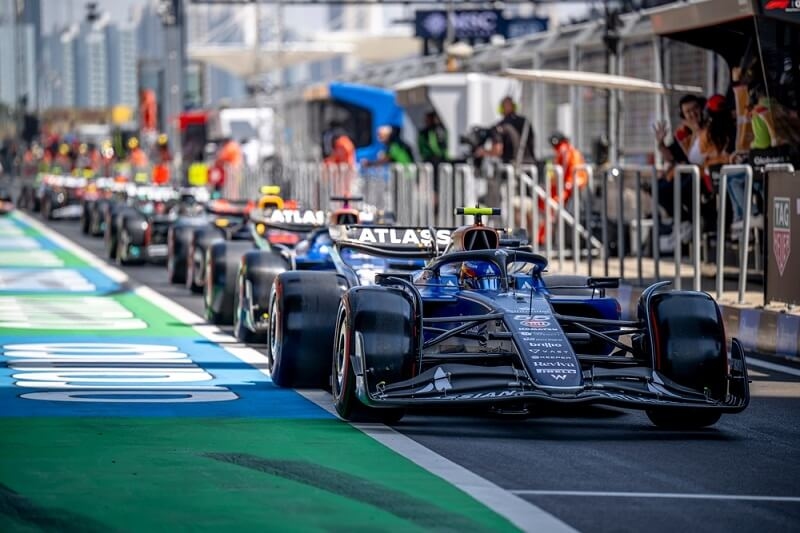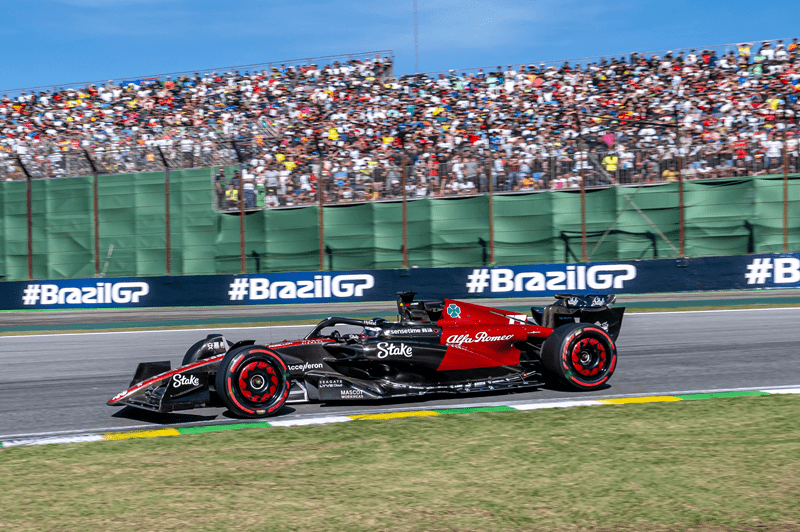Las Vegas Grand Prix 2023: Paving Schedule Through Fall

The Las Vegas Grand Prix has always been an electrifying event, drawing motorsport enthusiasts from across the globe to witness high-speed thrills and heart-pounding races. As the calendar turns to 2023, anticipation builds as the organizers prepare for the grand spectacle once again. However, this year holds a unique significance as the event will see a significant upgrade the implementation of an ambitious paving schedule till September 1 to enhance the racing experience and ensure the safety of the drivers and spectators alike.
The Paving Schedule
- North side of Harmon Ave: The rolling lane closures will take place from Sunday, July 16, to Friday, July 21.
- East side of Koval Lane: Rolling lane closures will be in effect from Sunday, July 16, to Friday, July 28.
- Spring Mountain Rd. and Las Vegas Blvd.: Expect closures from Monday, July 24, to Friday, July 28.
- West side of Koval Lane: Rolling lane closures will occur from Monday, August 28, to Friday, September 1.
- Rolling lane closures westbound on the north side of Harmon Ave. between Koval Lane and Las Vegas Blvd. will begin at 9 p.m. on Sunday, July 16, and conclude at 9 a.m. on Friday, July 21.
- Rolling lane closures northbound on the east side of Koval Lane between Rochelle Ave. and Flamingo Rd. will start at 9 p.m. on Sunday, July 16, and finish at 3 p.m. on Friday, July 21.
- Rolling lane closures northbound on the east side of Koval Lane between Flamingo Rd. and Westchester Dr. are scheduled from 9 p.m. on Sunday, July 23, until 3 p.m. on Friday, July 28.
- Closures eastbound and westbound at the intersection of Spring Mountain Rd. and Las Vegas Blvd. will be in effect from 9 p.m. on Monday, July 24, until 9 a.m. on Friday, July 28. Please note that there will be no through traffic westbound on Sands Ave. or eastbound on Spring Mountain Rd. However, traffic traveling on Las Vegas Blvd. will still be able to continue northbound and southbound through the intersection.
- Rolling lane closures southbound on the west side of Koval Lane between Westchester Dr. and Flamingo Rd. will commence at 9 a.m. on Monday, August 28, and conclude at 9 a.m. on Friday, September 1
The Need for a Paving Overhaul
The decision to undertake a comprehensive paving overhaul for the Las Vegas Grand Prix stems from multiple factors. First and foremost, the existing track was showing signs of wear and tear due to years of intense racing, leading to concerns about safety. Moreover, feedback from drivers and teams highlighted the need for an improved racing surface to challenge their skills while mitigating potential risks. Recognizing the importance of modernizing the circuit, the event organizers, in conjunction with experts, embarked on a journey to revamp the track.
The Planning Phase
The planning phase of the paving schedule was an arduous but crucial process. A team of experienced engineers, architects, and race consultants meticulously analyzed the existing track's layout and evaluated its strengths and weaknesses to ensure the best experience. Their goal was to maintain the essence of the Las Vegas Grand Prix while integrating new design elements to optimize the racing experience. Moreover, they had to consider the logistics of the construction process, ensuring minimal disruption to the host city's routine and residents.
Selecting the Right Materials
Choosing the right materials for the new track surface was a paramount decision. The engineering team considered various factors such as grip, durability, water drainage, and environmental impact. After careful deliberation, they settled on a high-quality asphalt blend that promised to deliver enhanced performance and longevity while adhering to sustainable practices. This choice not only aimed to elevate the racing experience but also reflected the event's commitment to eco-consciousness.
Upgrading Safety Measures
Safety has always been a top priority in motorsports, and the paving schedule offered an opportunity to introduce advanced safety measures. The new track design included wider run-off areas, advanced impact barriers, and improved signage for better visibility. Additionally, the track underwent rigorous safety testing to ensure it met and surpassed the stringent safety standards set by the Fdration Internationale de l'Automobile (FIA).
Embracing Technological Advancements
Incorporating cutting-edge technology was a significant aspect of the paving schedule. The track's engineering team collaborated with racing experts to deploy state-of-the-art track sensors that collected real-time data during races. This information not only provided teams with vital insights to fine-tune their strategies but also enabled organizers to monitor the track's condition continually. Such technological advancements aligned with the event's vision of being at the forefront of innovation within the motorsport industry.
Ensuring Minimal Disruption
While the transformation of the Las Vegas Grand Prix track was a substantial undertaking, the organizers were mindful of minimizing disruption during the construction process. To achieve this, they divided the project into phases and collaborated closely with the city's authorities to coordinate construction activities. By employing efficient project management and effective communication, the paving schedule proceeded smoothly, ensuring the event's date remained intact.
Reimagining the Racing Experience
As the new track began to take shape, excitement buzzed among fans and drivers alike. The revamped Las Vegas Grand Prix promised to deliver a racing experience like never before. The enhanced surface and safety measures elevated the event's prestige, attracting new sponsors, media attention, and a surge in ticket sales.
Unveiling the New Track
With the final touches completed, the momentous day arrived the unveiling of the new Las Vegas Grand Prix track. A ribbon-cutting ceremony featuring prominent racing figures and local dignitaries celebrated the successful completion of the ambitious paving schedule. The world watched in anticipation as drivers got the first taste of the upgraded circuit, affirming that the efforts were well worth it.
This content was created by AI




